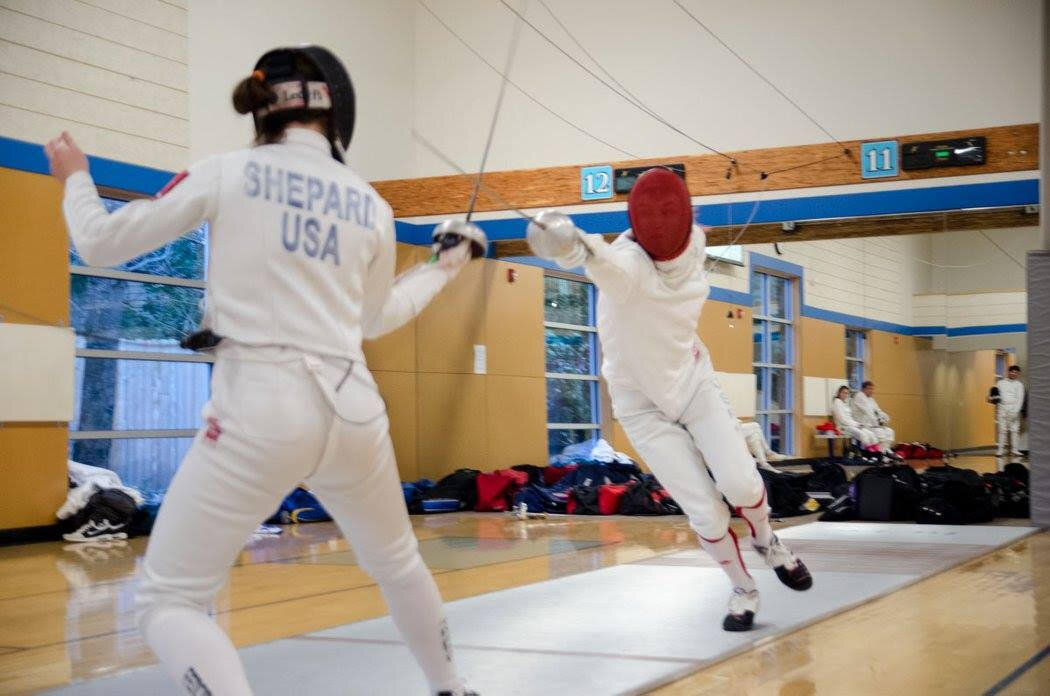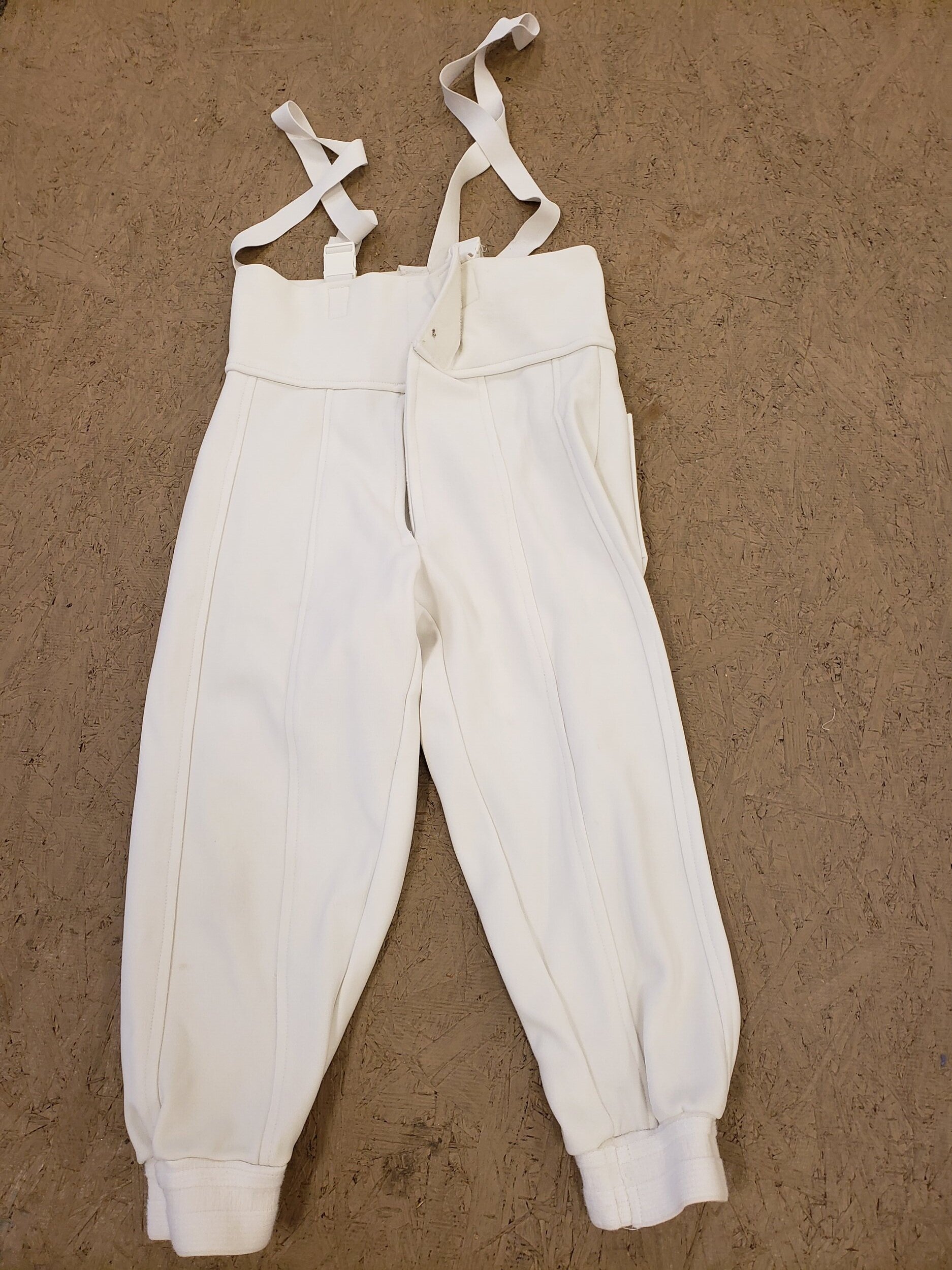About The Sport of Fencing
Fencing is a combat sport that evolved from dueling. In modern fencing there are three different weapons, each with its own rules. When you think of fencing, you most likely think of foil. The foil is the lightest of the three weapons and has the smallest hand guard. In foil, points are scored by landing a touch on the opponent’s torso, excluding the arms. The rules of foil are the most complex of the three, with specifics regarding who earns the point if both fencers make contact. Sabres are slashing weapons with a curved hand guard. Points are scored in sabre by making contact with the side of the blade against any point on the opponent’s body above the waist, including the hands and arms. Épées are heavier than a foil and have a larger bell guard to protect the hand (the fencers in the picture to the left are using épées). Points are scored in épée for making contact with any part of the opponent’s body using the tip of the blade. At Orion, all fencers begin with foil, and may branch out to other weapons after completing the beginner’s course if they choose.
Fencing equipment
Jacket
The fencing jacket is a staple. Made of thick canvas, the jacket protects the chest and arms from cuts. Fencers in all three weapons wear a standard fencing jacket.
Chest Protector
The chest plate is worn under the jacket and arm guard. It is made of sturdy plastic and protects the chest and ribs from bruises. There are a few different styles to choose from, depending on your sport and preference.
Mask
The mask has a wire mesh front to protect the face from hits or broken blades. The mesh is designed to be strong, yet easy to see through. The bottom of the mask has a canvas bib to protect the throat and upper chest, ensuring that no skin is exposed.
Pants
In tournament, fencers wear white calf-length pants. They have suspenders that go under the jacket to ensure that no skin is exposed between the pants and the jacket. You don’t need special pants for lessons! Regular old athletic pants will do just fine. Just make sure that they are longer than the knee to protect your thighs and knees from cuts.
Shoes
You don’t need anything fancy for shoes, just something that you can be active in. It is helpful to have shoes with good grip and/or clean soles to keep traction as you fence.
Body Cords
Body cords plug in to the weapon, then run inside the sleeve and down inside of the jacket to plug in to a reel of cord at either end of each strip. These cords use an electric circuit to turn on a light when a touch is landed on target for foil or sabre fencers. The reels allow fencers free movement up and down the strip without becoming a tripping hazard.
Arm Guard
This is an additional piece worn underneath the jacket on the weapon arm. It acts as an extra layer of padding to protect the shoulder, chest, and ribs from cuts and bruises.
Lamé
A lamé is a metallic jacket that is worn over the top of the white fencing jacket in foil and sabre. It is used with body cords to turn on a light when a touch lands on target. The lamé above is for foil, the ones for sabre have full sleeves.
Glove
The glove is worn on the weapon hand. It is padded and made of thick material to protect the hand.
Blade
The blade is, clearly, the essence of fencing. In the picture above, the blades are (from left to right) a pistol-grip foil, a French grip foil, an épée, and a sabre.


![20210719_140739[1].jpg](https://images.squarespace-cdn.com/content/v1/5cd46a4a0b77bd808eb309d7/1626737792422-PVX4L71VOJSEFC3DA44S/20210719_140739%5B1%5D.jpg)








![20210719_141326[1].jpg](https://images.squarespace-cdn.com/content/v1/5cd46a4a0b77bd808eb309d7/1626737732721-NNNQVLROVQVJY2SV0O00/20210719_141326%5B1%5D.jpg)